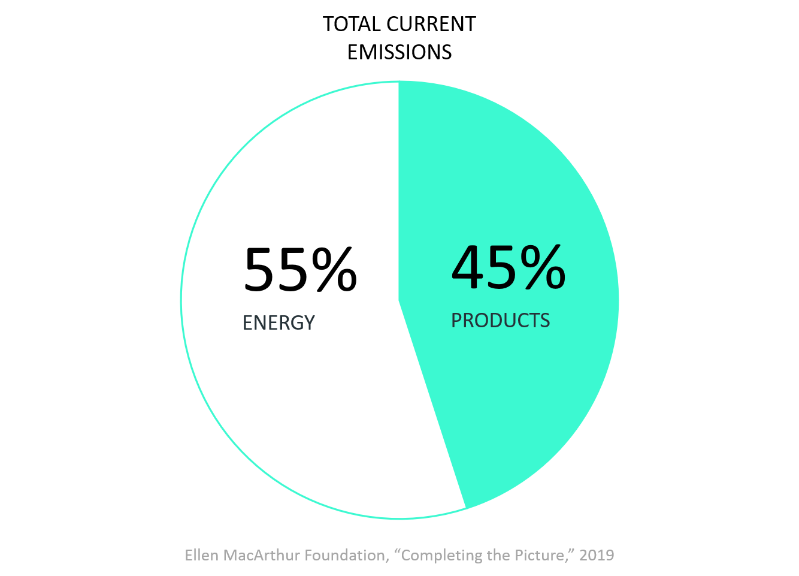Origin's point of view on materials & climate
The Fossil Economy – for consumers and business – has been a breathtaking success. Petroleum and natural gas account for 80% of global energy production, with nuclear, wind, solar and others – for all their advances – hardly upsetting the balance.
And it’s not just energy. Fossil resources are the dominant platform when it comes to chemicals, materials and products.
But the system is fundamentally broken: Today, greenhouse gases – bi-products of the Fossil Economy – are trapping heat in the atmosphere. The planet is getting hotter, faster. It’s a disaster and things will only get worse.
And yet, by any scientific yardstick, the solutions of the day – focused mostly on green energy – won’t be nearly enough to curb GHG production, let alone remove carbon from the atmosphere before it’s too late.

That’s because even if 100% of global energy magically became fossil-free overnight, it still wouldn’t be enough. Nearly half of all emissions don’t come from energy at all. They come from making things – materials.
And yet, with a handful of exceptions, the industry that makes the world’s materials – the chemical industry – is still standing on the Fossil Economy platform, business as usual.
When it comes to solving emissions from materials, we don’t ask the most important questions: What needs to happen? How will it happen? When must it happen?
The thing is, to solve for materials in an age of climate change, you need a solution that’s fundamental. But most innovations are partial solutions– new products, even new classes of materials– that don’t go to the root of the problem, the Fossil Economy platform itself.
Any material solution serious about going beyond the Fossil Economy must be 3 things: 1) carbon-negative enough to solve for climate; 2) flexible enough to transform many industries; 3) economically sustainable.
Without a solution like that, we simply will not win. There is a huge, chasm-sized gap between the carbon-negative, flexible, economic material solutions we need, and the Fossil Economy platform we still rely on. We call it the Material Problem.

This is the Material Problem: “The world is still not close to being on track to limit the temperature rise to 1.5˚C in 2100.”
This, too, is the Material Problem: “The global economic damage with a 1.5°C rise above the pre-industrial levels has been estimated at USD 54 trillion in 2100, increasing to USD 69 trillion with a 2°C rise.”
And so is this: “A circular economy framework [for materials] can achieve a reduction totaling 9.3 billion tonnes of greenhouse gases in 2050. This is equivalent to eliminating current emissions from all forms of transport globally.”
(Sources: Ellen MacArthur Foundation, “Completing the Picture – How the Circular Economy Tackles Climate Change.)
Imagine if Tesla had aimed for incremental improvements instead of building from the ground up. The electric car as we know it wouldn’t exist.
Countless companies have dipped their toe in the water, developing a sustainable product line, buying carbon offsets, or installing solar panels. Good for them for taking steps. But they left out the broadest, deepest opportunity of all – changing the materials flowing through their business.
The result? Countless hours and billions of dollars wasted on dead-end solutions. Until now, no solution has been powerful enough to solve the Material Problem. There has been no solution sustainable, flexible, and economical enough to replace the Fossil Economy platform for materials.
Until now.
To learn more, contact hello@originmaterials.com.